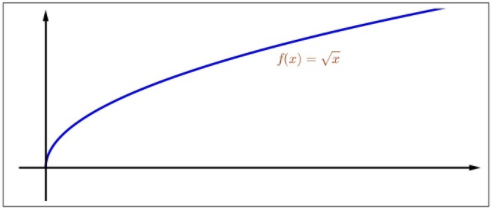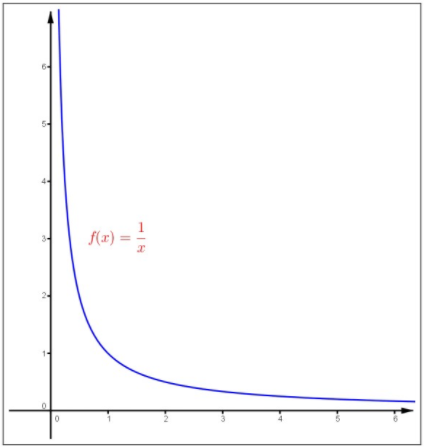3.5: Uniform Continuity
( \newcommand{\kernel}{\mathrm{null}\,}\)
We discuss here a stronger notion of continuity.
Let
Any constant function
Solution
Indeed, given
The following result is straightforward from the definition.
If
Let
Solution
Let
Let
Solution
Let
Let
Solution
Let
(where we used that
Now set
Let
The number
If a function
- Proof
-
Since
If
The proof is now complete.
- Let
Solution
- Then the function
which shows

Figure
- Then
Indeed, suppose by contradiction that
Thus, for every
This implies
This is a contradiction. Therefore,
Let us show that
The inequality in (3.9) holds obviously for
Note that one can justify that inequality
by squaring both sides since they are both positive. Thus, (3.9) is satisfied.
While every uniformly continuous function on a set
Let

Figure
Solution
We already know that this function is continuous at every
This shows
The following theorem offers a sequential characterization of uniform continuity analogous to that in Theorem 3.3.3.
Let
(C) for every two sequences
- Proof
-
Suppose first that
To prove the converse, assume condition (C) holds and suppose, by way of contradiction, that
Thus, for every
It follows that for such sequences,
Using this theorem, we can give an easier proof that the function in Example 3.5.6 is not uniformly continuous.
Solution
Consider the two sequences
The following theorem shows one important case in which continuity implies uniform continuity.
Let
- Proof
-
Suppose by contradition that
Thus, for every
Since
Then
for all
By the continuity of
Therefore,
We now prove a result that characterizes uniform continuity on open bounded intervals. We first make the observation that if
Let
- Proof
-
Suppose first that there exists a continuous function
For the converse, suppose
Let
and, hence,
By its definition
Exercise
Prove that each of the following functions is uniformly continuous on the given domain:
- Answer
-
Add texts here. Do not delete this text first.
Exercise
Prove that each of the following functions is not uniformly continuous on the given domain:
- Answer
-
Add texts here. Do not delete this text first.
Exercise
Determine which of the following functions are uniformly continuous on the given domains.
- Answer
-
Add texts here. Do not delete this text first.
Exercise
Let
- Answer
-
Add texts here. Do not delete this text first.
Exercise
Give an example of a subset
- Answer
-
Add texts here. Do not delete this text first.
Exercise
Let
- Answer
-
Add texts here. Do not delete this text first.
Exercise
Let
- Prove that if
- Prove that if
- Answer
-
Add texts here. Do not delete this text first.
Exercise
Let
- Prove that
- Prove that
- Suppose further that
- Answer
-
Add texts here. Do not delete this text first.


